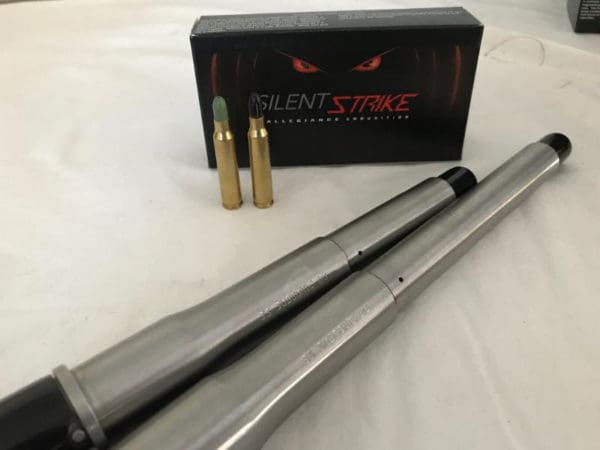


With peak chamber pressure in excess of 50,000 psi, the timing of the bolt unlocking must happen when pressure levels are safe enough to open the bolt without destroying the weapon or even worse, injuring the shooter or someone else near the shooter. Where there must be caution in the engineering and design is when the bolt unlocking takes place. The shorter gas tube is closer to the chamber and will have higher pressure to allow it to be sufficient enough to cycle the bolt. 300 Whisper)-we sometimes see AR-15 platform guns built with pistol-length gas systems to try to address subsonic loads that will not have sufficient power/pressure in a carbine-length gas tube to cycle the action.

A bolt-action rifle is manually cycled and doesn’t have a minimum pressure threshold necessary to reliably cycle the action that a semi-auto or full-auto does. 223 ammo (or any subsonic rifle ammo in general) is what you will be shooting it out of. The first question you need to answer about subsonic. Pigtail Gas Tube – Attempts at Reliable Cycling Reducing noise is good for yourself and makes good neighbors, thus the impetus of the Hearing Protection Act and why suppressors are in common use and readily available to shooters in Europe.
#SUBSONIC 223 147G 5.56 CRACK#
Where subsonic ammo comes into play is taking this down even more and getting rid of the secondary supersonic crack from the bullet. A good suppressor can get that down to 135 dB, below the impact noise threshold the Navy beat into my head years ago from NAVOSH 5100.19. With a typical 16-inch barreled AR-15/M16 delivering a 167 dB sound pressure level at the muzzle (depending on environmental conditions) with M193 55-gr FMJBT round, we are already exceeding the 140 dB impact noise threshold for hearing conservation. While we may only be talking 2-3 dB improvement changing from supersonic to subsonic ammo, remember that the decibel scale is logarithmic, so every 3 dB change represents doubling or halving the energy of the reference. A typical “can” (slang for suppressor) may have a 32 dB rating (maybe even 38 or more if it has a wet rating as well, where the suppressor/silencer is designed to be oiled before shooting). It’s a segment of the shooting community that talks in dB (decibels) and how much average noise reduction they’re achieving. 223 or 5.56 ammo often comes from the NFA community-those shooters and collectors who are using a suppressor (although the term silencer is even used in the industry, it’s an inaccurate term for what it does) and are looking for that much more of an edge to be even quieter. Like many things ammo, there are almost as many opinions as there are varieties of ammo and the ammo that is apparently out there in the market is vaporware.


 0 kommentar(er)
0 kommentar(er)
